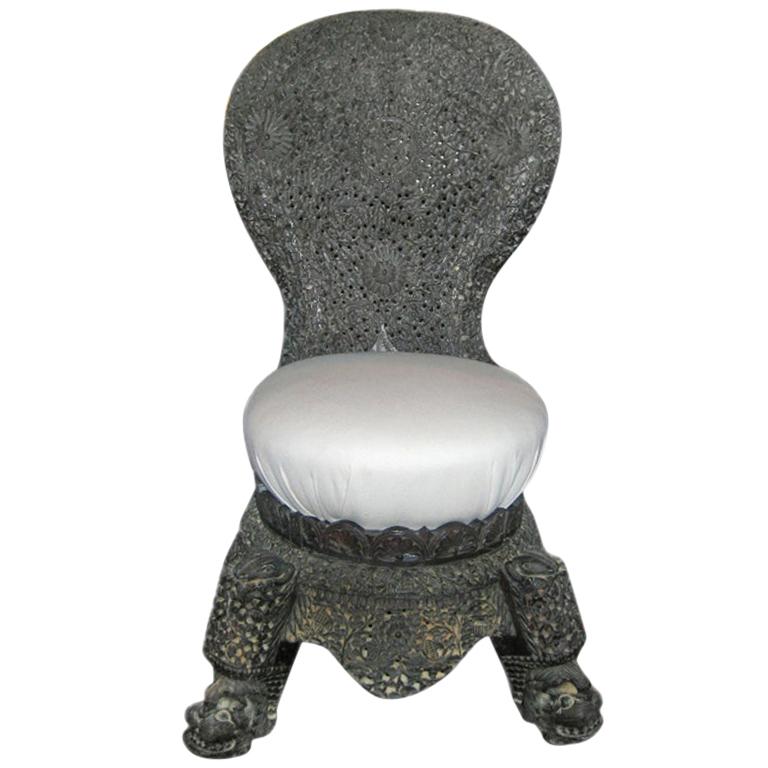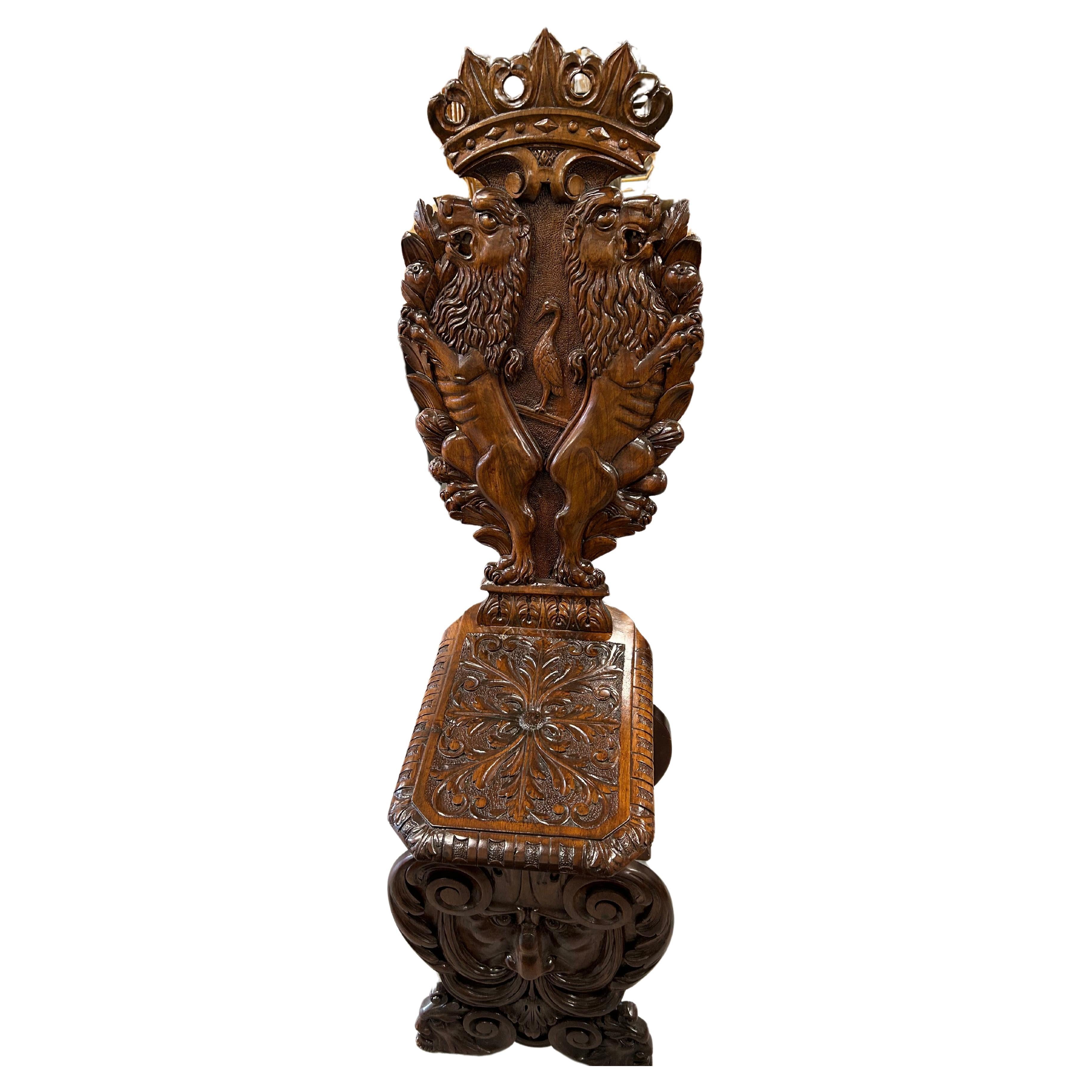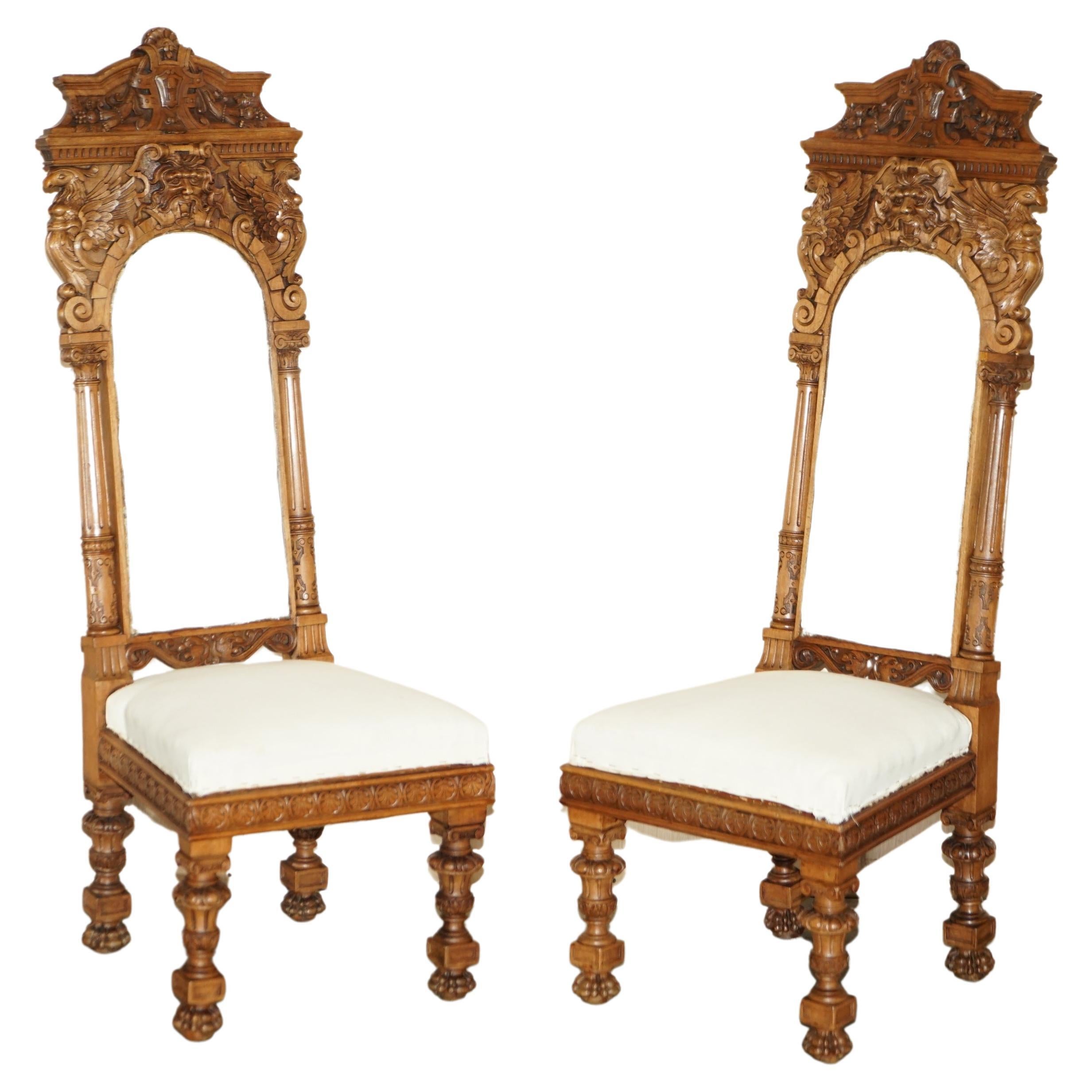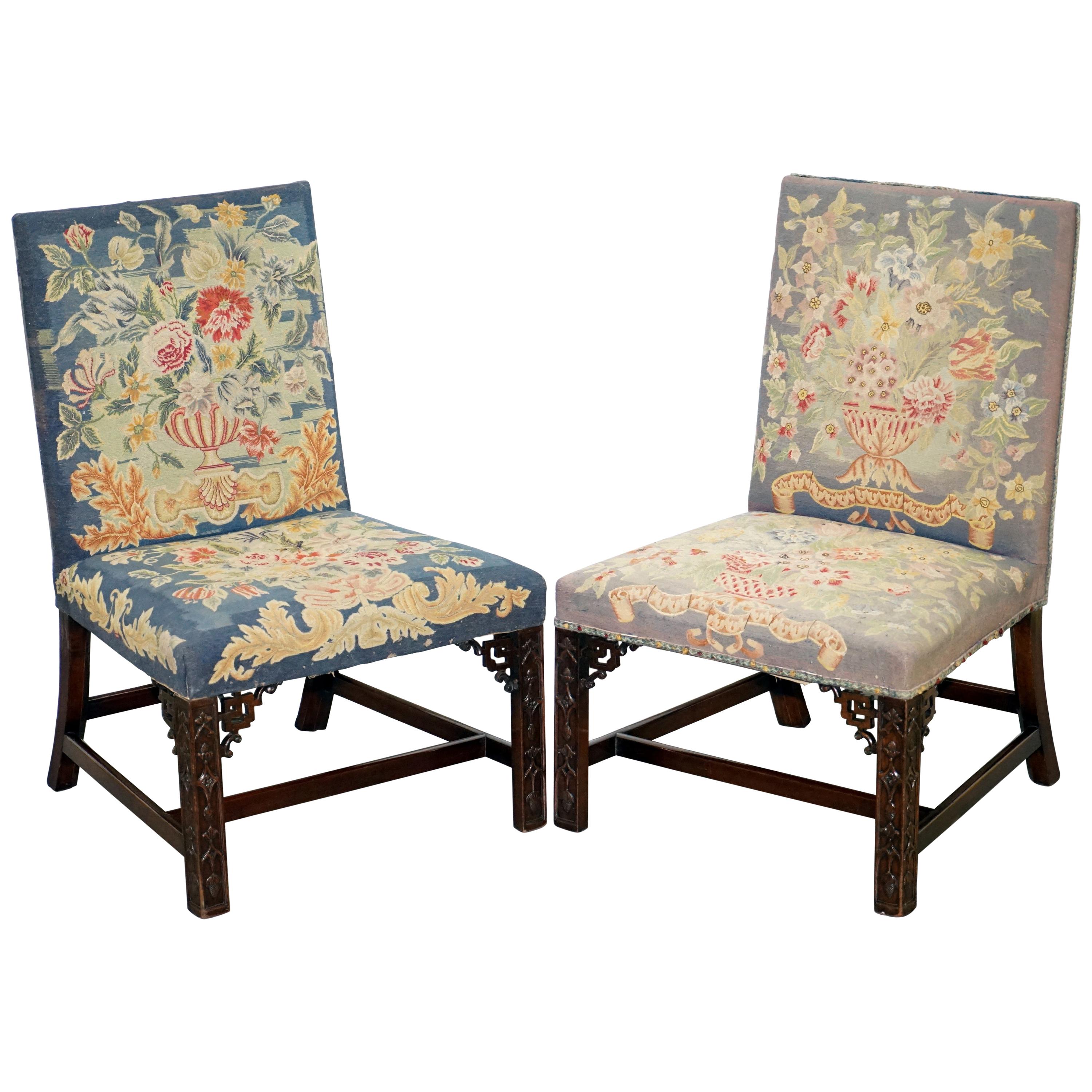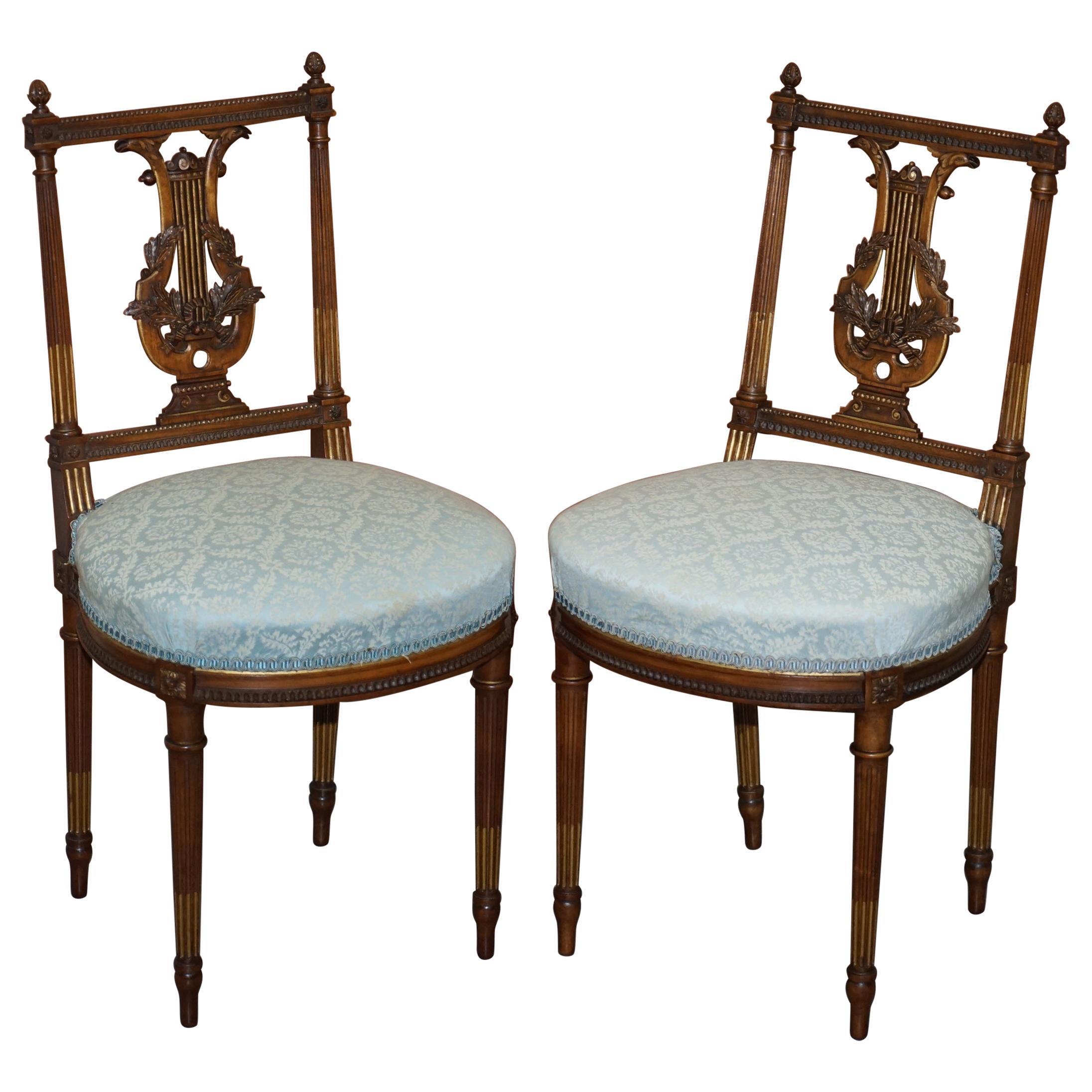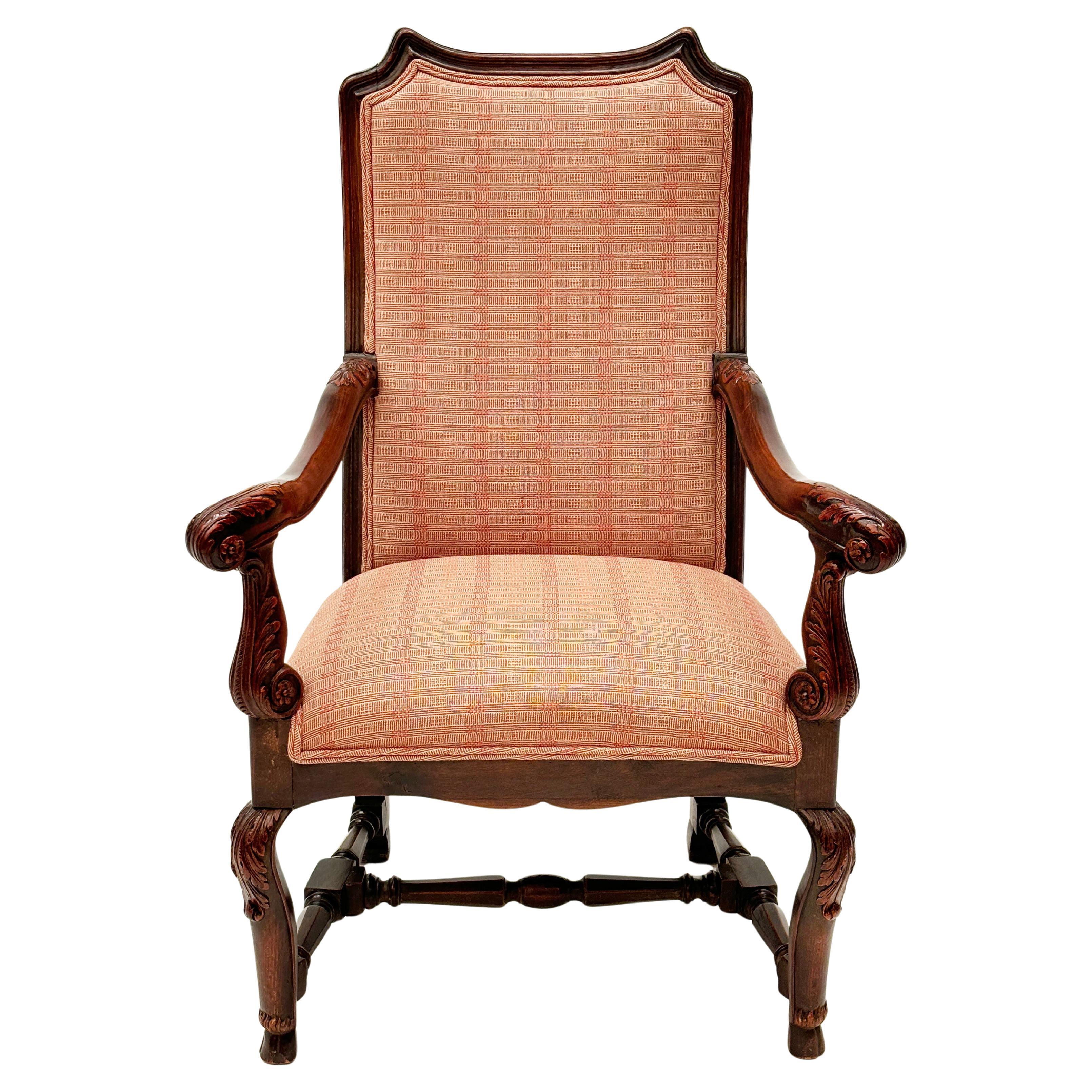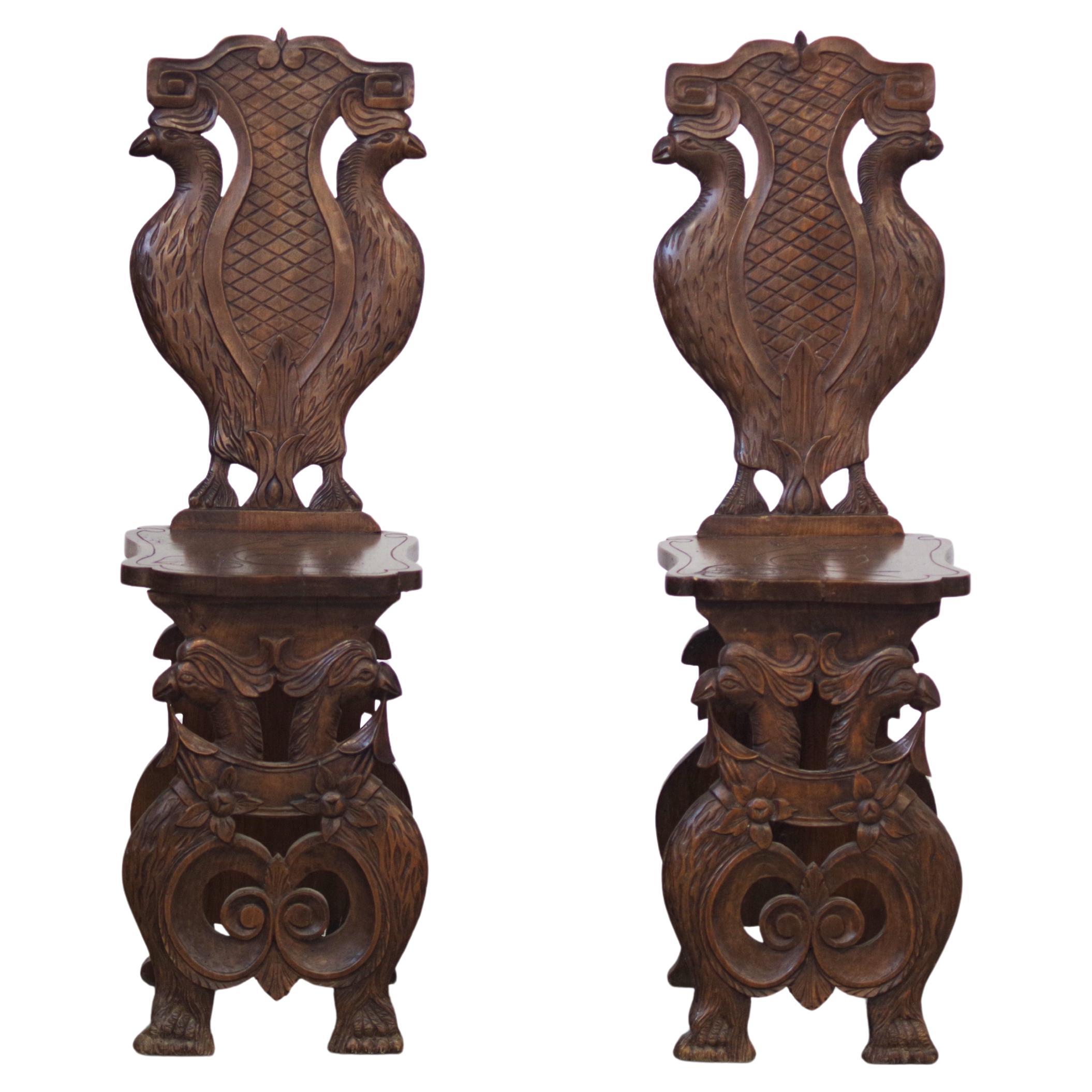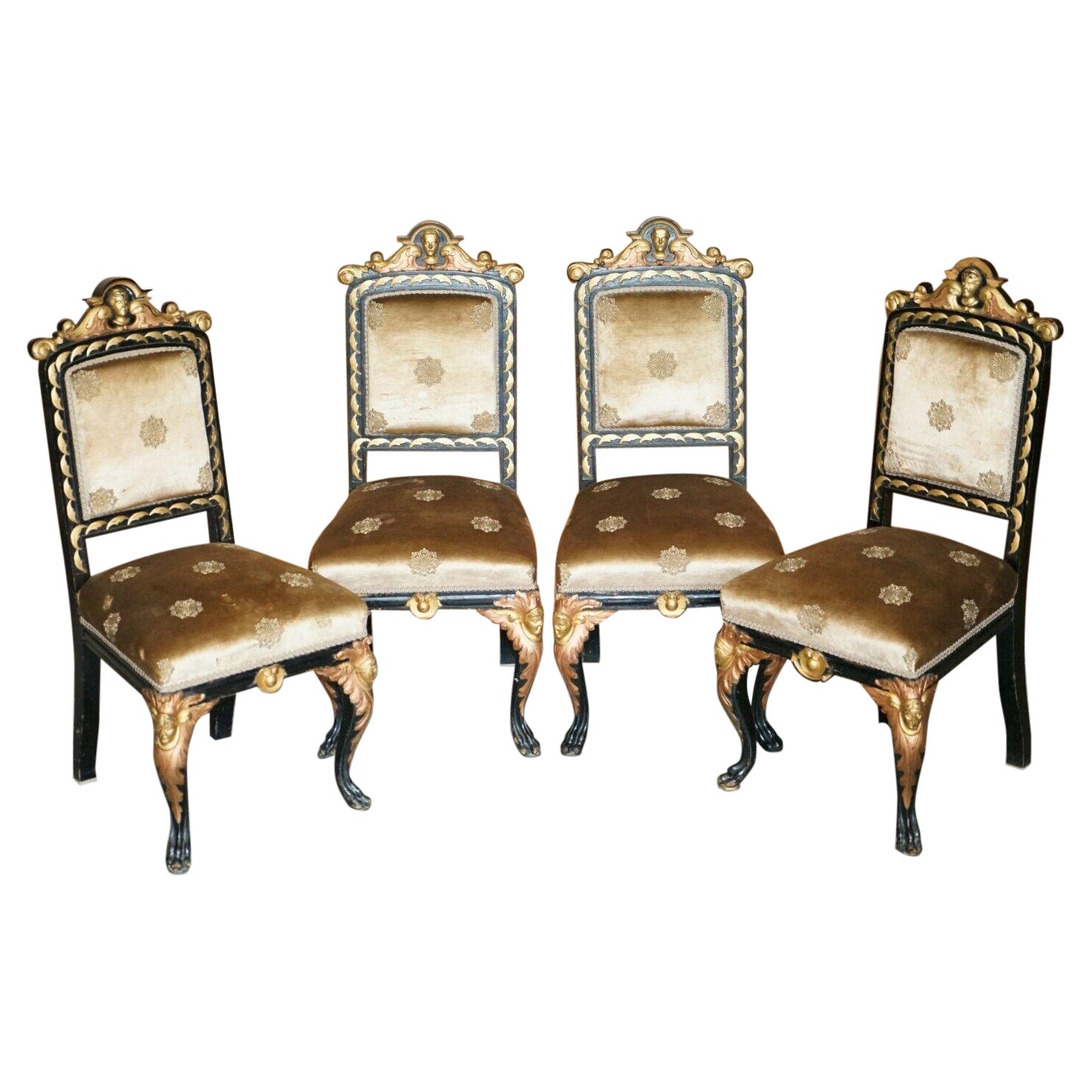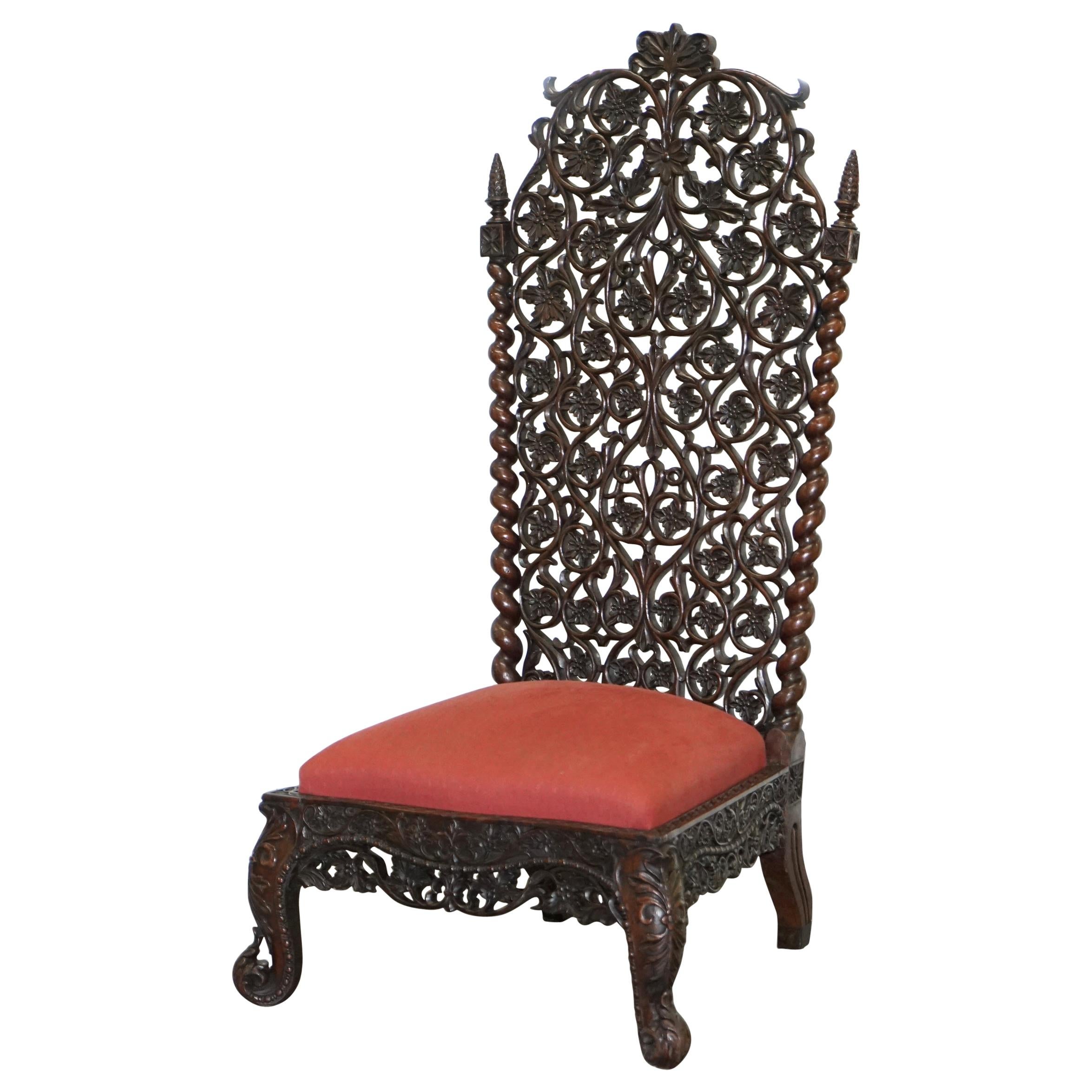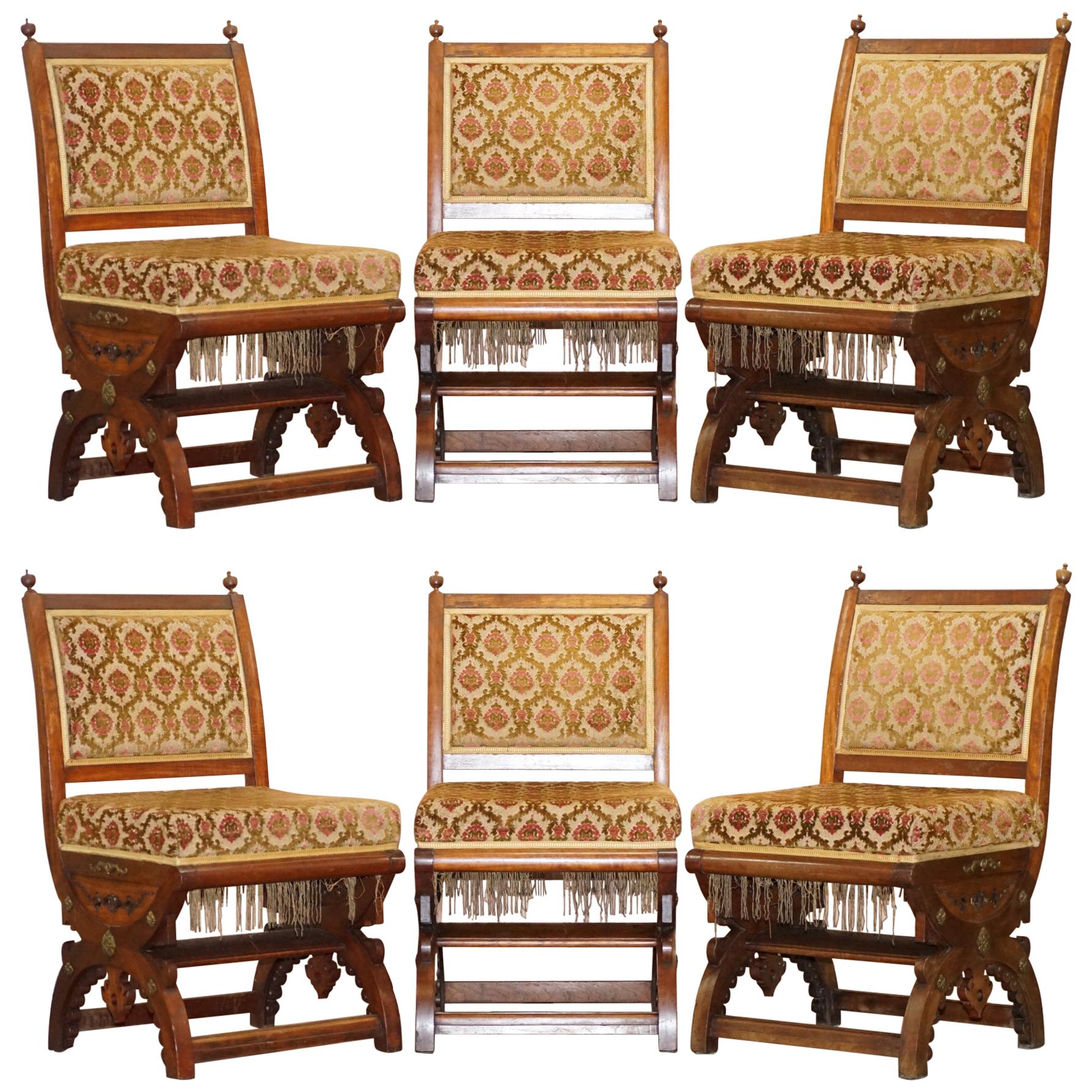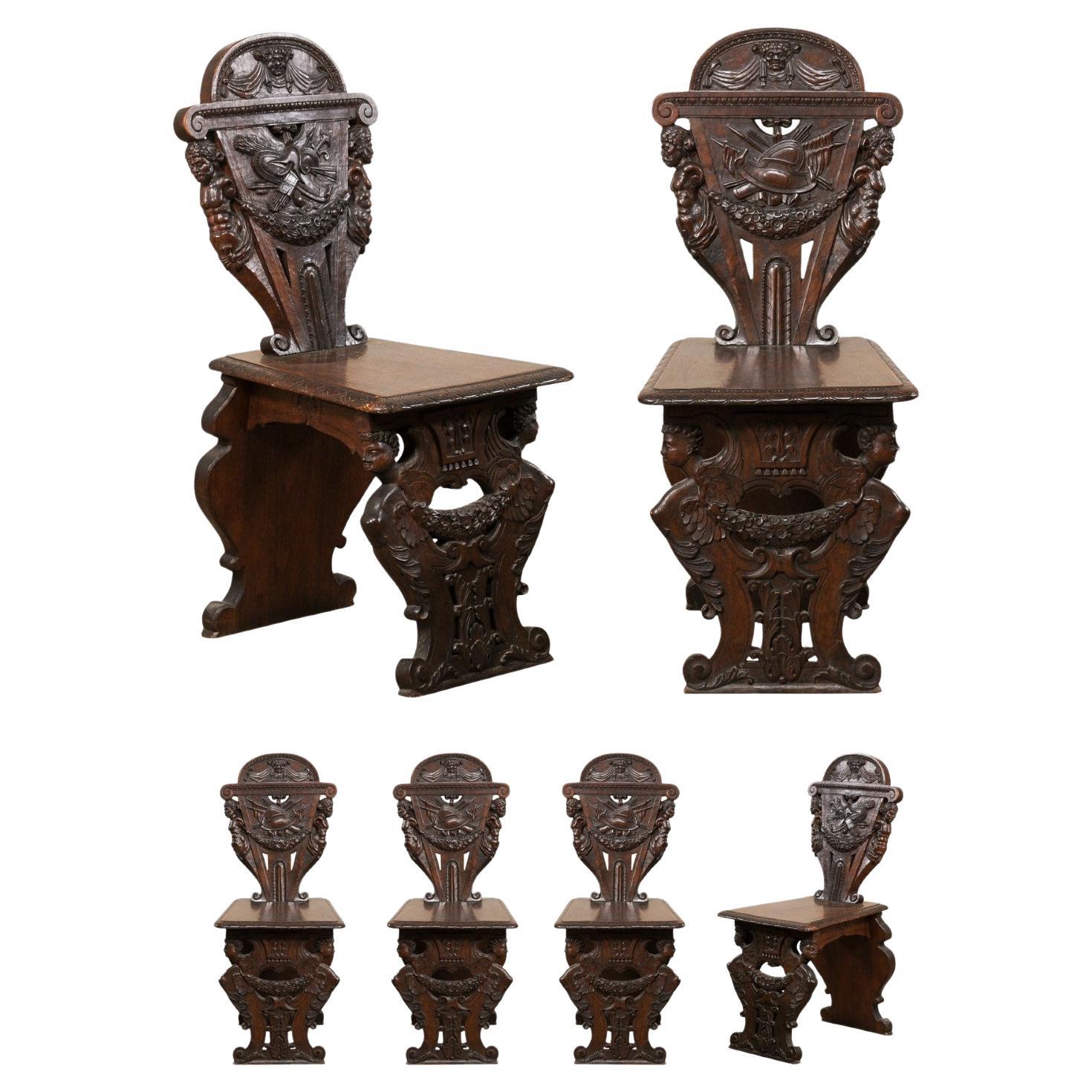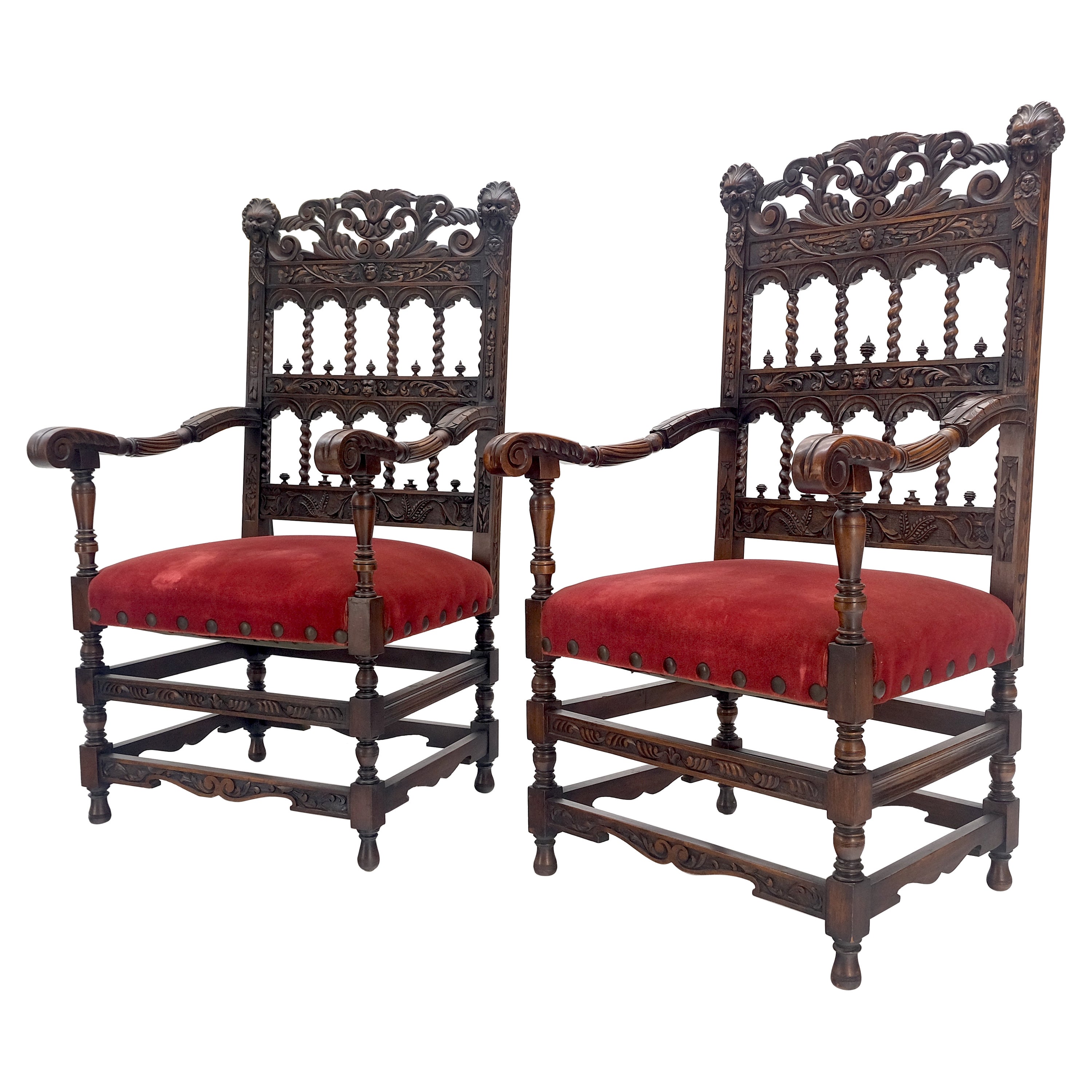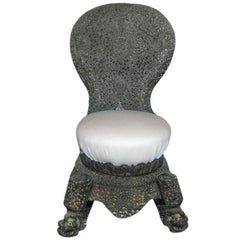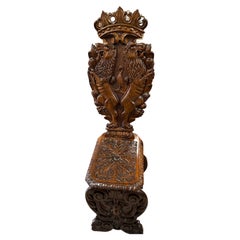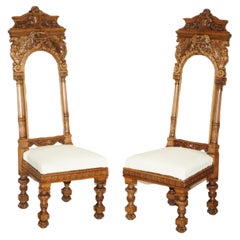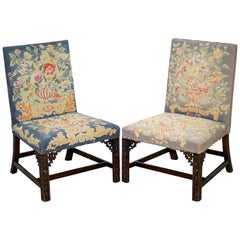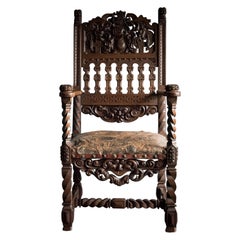
Heavily Carved Ornate Chair
View Similar Items
1 of 20
Heavily Carved Ornate Chair
About the Item
- Dimensions:Height: 69.3 in (176 cm)Width: 25.6 in (65 cm)Depth: 22.05 in (56 cm)
- Materials and Techniques:
- Period:
- Date of Manufacture:Unknown
- Condition:All Kingham Decorative items: the very bare minimum of restoration work may have been carried out. This is to ensure we retain the age and history of each piece, preserving the essence of originality and integrity.
- Seller Location:Alton, GB
- Reference Number:Seller: 0002981stDibs: LU6819229623892
Authenticity Guarantee
In the unlikely event there’s an issue with an item’s authenticity, contact us within 1 year for a full refund. DetailsMoney-Back Guarantee
If your item is not as described, is damaged in transit, or does not arrive, contact us within 7 days for a full refund. Details24-Hour Cancellation
You have a 24-hour grace period in which to reconsider your purchase, with no questions asked.Vetted Professional Sellers
Our world-class sellers must adhere to strict standards for service and quality, maintaining the integrity of our listings.Price-Match Guarantee
If you find that a seller listed the same item for a lower price elsewhere, we’ll match it.Trusted Global Delivery
Our best-in-class carrier network provides specialized shipping options worldwide, including custom delivery.You May Also Like
19th Century Ornately Carved Indian Raj Chair
Located in Dallas, TX
Indian slipper chair with reworked chair seat. Beautifully carved wood detailing - floral and animal motifs.
Category
Antique 19th Century Indian Slipper Chairs
Materials
Wood
Heavily Carved Walnut Sgabello Hall Chair with Lions
Located in Hopewell, NJ
Beautiful ornately carved Italian Sgabello hall chair having amazing figural details including face on the base, lions and bird on the front, gorgeous smooth back and grain to the wood.
Category
Antique 19th Century Italian Jacobean Chairs
Materials
Walnut
Pair of Ornate Carved Antique Italian Throne Chairs with Griffins / Dragons
Located in West Sussex, Pulborough
We are delighted to offer for sale this absolutely stunning pair of original, hand carved in solid walnut, Italian high back throne chairs .
Th...
Category
Antique Mid-19th Century Italian High Victorian Chairs
Materials
Walnut
Rare Pair of Thomas Chippendale Period 1760 Embroidered Chairs Ornately Carved
By Thomas Chippendale Jr., Thomas Chippendale
Located in West Sussex, Pulborough
We are delighted to this very rare pair of Thomas Chippendale era circa 1760 Library chairs with period embroidered upholstery
These are a very rare and highly collectible pair of Library chairs, they were made in the Chippendale era and closely after his designs, the fret work carving, ornate legs, all very finely executed by a master craftsman
The upholstery is all original embroidery, the colours are very much of the period and not seen on later reproduction pieces. These are an exceptional example and would be highly prized in any collection
The chairs have been lightly restored to include some work to the carvings, the timber has been sympathetically French polished to ensure none of the original charm and patina has been lost
A period pair of Chippendales by the great man himself (which these could be) would retail for the high hundreds of thousands, however alas Chippendales are only originals if they come with iron clad provenance, a difficult thing to keep hold of for nearly 250 years. One of the chairs has a plaque to the base for Charles Tozer of 25 Brook street London, Mr Tozer was a very well respected Antiques dealer in the early 20th to mid 20th century that specialised in 18th century furniture
Dimensions:
Height 97cm
Width 64cm
Depth 65cm
Please note all measurements are taken at the widest point
Thomas Chippendale (1718–1779) was born in Otley in the West Riding of Yorkshire, England in June 1718. He became a cabinet-maker in London, designing furniture in the mid-Georgian, English Rococo, and Neoclassical styles. In 1754 he published a book of his designs, titled The Gentleman and Cabinet Maker's Director, upon which success he became renowned. The designs are regarded as representing the current British fashion for furniture of that period and are now reproduced globally. He was buried 16 November 1779, according to the records of St Martin-in-the-Fields, in the cemetery since built upon by the National Gallery. Chippendale furniture is much valued; a padouk cabinet that was offered for auction during 2008 sold for £2,729,250.
Life
"A Design for a State Bed" from the Director, 1762. Chippendale was born the only child of John Chippendale (1690–1768), joiner, and his first wife Mary (née Drake) (1693–1729). He received an elementary education at Prince Henry's Grammar School. The Chippendale family had long been involved with the wood working trades and so he probably received his basic training from his father, though it is believed that he was also trained by Richard Wood in York, before he relocated to London. Wood later ordered eight copies of the Director. On 19 May 1748 he married Catherine Redshaw at St George's Chapel, Mayfair and they had five sons and four daughters.
During 1749 Chippendale rented a modest house in Conduit Court, near Covent Garden. In 1752 he relocated to Somerset Court, off the Strand. In 1754 Chippendale relocated to 60–62 St Martin's Lane in London, where for the next 60 years the family business operated, until 1813 when his son, Thomas Chippendale (Junior), was evicted for bankruptcy. During 1754 he also began a partnership with James Rannie, a wealthy Scottish merchant, who put money into the business at the same time as Chippendale produced the first edition of the Director. Rannie and his bookkeeper, Thomas Haig, probably cared for the finances of the business. His wife, Catherine, died during 1772. After James Rannie died in 1766, Thomas Haig seems to have borrowed £2,000 from Rannie's widow, which he used to become Chippendale's partner. One of Rannie's executors, Henry Ferguson...
Category
Antique 1760s English Georgian Side Chairs
Materials
Upholstery, Hardwood
Ornate Pair of Important Hand Carved Giltwood Occasional Chairs Phoenix Harp
Located in West Sussex, Pulborough
We are delighted to offer for sale this stunning pair of very important looking hand carved with giltwood accents occasional chairs
These are very decorative side chairs, I’m sur...
Category
20th Century English Victorian Side Chairs
Materials
Upholstery, Hardwood
Mid 1800's French Regency Upholstered Chair with Ornately Carved Arms, Legs
Located in Louisville, KY
This stunning high-back French Regency chair boasts all the beautiful detail one would come to expect from this era. From the hand carved ornament...
Category
Antique Late 19th Century French Regency Chairs
Materials
Upholstery, Oak
Recently Viewed
View AllMore Ways To Browse
Mersman Living
Metal Cantilever Midcentury Modern Dining Room Chairs
Metal Owls Wall
Metamorphic Library Steps
Metamorphic Steps
Mexican Hand Painted Bowl
Mexican Turquoise Glasses
Mexican Votives
Michael Taylor For Baker Furniture New World Collection
Michelin Man Tiles
Mid Century Modern Sleeper
Mid Century Sofa Tilted Back
Military Metal Boxes
Milo Baughman Pink
Milo Baughman Table Gold
Ming Style Console Table
Ming Table Round
Mini End Table
